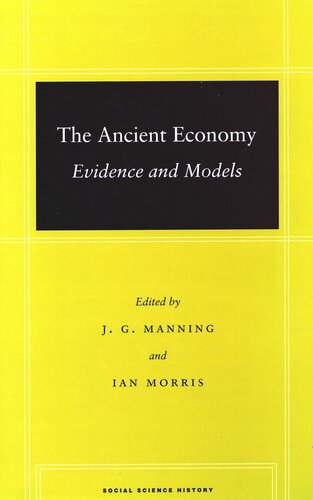

Most ebook files are in PDF format, so you can easily read them using various software such as Foxit Reader or directly on the Google Chrome browser.
Some ebook files are released by publishers in other formats such as .awz, .mobi, .epub, .fb2, etc. You may need to install specific software to read these formats on mobile/PC, such as Calibre.
Please read the tutorial at this link: https://ebookbell.com/faq
We offer FREE conversion to the popular formats you request; however, this may take some time. Therefore, right after payment, please email us, and we will try to provide the service as quickly as possible.
For some exceptional file formats or broken links (if any), please refrain from opening any disputes. Instead, email us first, and we will try to assist within a maximum of 6 hours.
EbookBell Team

4.1
50 reviewsHistorians and archaeologists normally assume that the economies of ancient Greece and Rome between about 1000 BC and AD 500 were distinct from those of Egypt and the Near East. However, very different kinds of evidence survive from each of these areas, and specialists have, as a result, developed very different methods of analysis for each region. This book marks the first time that historians and archaeologists of Egypt, the Near East, Greece, and Rome have come together with sociologists, political scientists, and economists, to ask whether the differences between accounts of these regions reflect real economic differences in the past, or are merely a function of variations in the surviving evidence and the intellectual traditions that have grown up around it. The contributors describe the types of evidence available and demonstrate the need for clearer thought about the relationships between evidence and models in ancient economic history, laying the foundations for a new comparative account of economic structures and growth in the ancient Mediterranean world.